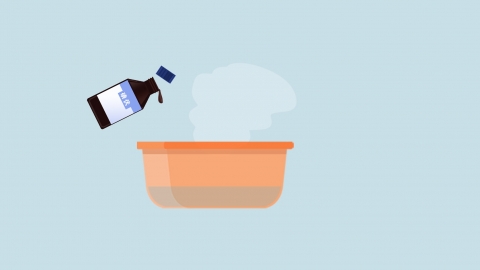What are the effects of povidone-iodine disinfectant solution?
Iodophor disinfectant is a commonly used topical antiseptic in clinical practice and daily life. It works primarily by releasing iodine ions and is characterized by broad-spectrum antimicrobial activity, low irritation, and wide applicability. Its main functions include killing bacterial vegetative cells, eliminating fungi, inactivating viruses, treating skin and mucous membrane injuries, and preventing surgical site infections. A detailed analysis is as follows:

1. Killing bacterial vegetative cells: Iodophor is effective against various common pathogenic bacteria in their vegetative forms, such as *Staphylococcus aureus*, *Escherichia coli*, and *Streptococcus* species. These bacteria often cause superficial skin infections and wound suppuration. Applying iodophor can help control the spread of infection and promote local tissue healing.
2. Killing fungi: Iodophor also exhibits certain fungicidal effects against pathogens causing fungal skin infections, such as *Candida* and dermatophytes. When symptoms like itching, erythema, and scaling occur due to fungal infection, applying iodophor to the affected area can inhibit fungal growth and alleviate infection symptoms.
3. Inactivating viruses: Iodophor can inactivate certain viruses, including hepatitis B virus, influenza virus, and enteroviruses that cause hand, foot, and mouth disease. After contact with potentially contaminated objects or when minor viral skin lesions appear, wiping the skin with iodophor can reduce viral load and lower the risk of virus transmission.
4. Treating skin and mucous membrane injuries: Common injuries such as abrasions, cuts, burns, and minor damage to oral or vaginal mucosa can be disinfected using iodophor. It is much less irritating than tincture of iodine or alcohol, causing minimal stinging upon application, while effectively cleansing wounds and eliminating pathogens.
5. Preventing surgical site infections: Prior to surgical procedures, healthcare professionals use iodophor to disinfect the skin at the surgical site. This helps remove pathogenic microorganisms from the skin surface, reducing the likelihood of microbial entry during surgery and lowering the risk of postoperative surgical site infections.
When using iodophor, avoid concurrent use with mercurochrome (red medicine liquid) to prevent the formation of toxic substances. Once opened, it should be used promptly to prevent volatilization of active ingredients and loss of efficacy. Store in a cool, dry place away from direct sunlight to maintain its stable disinfecting properties.





